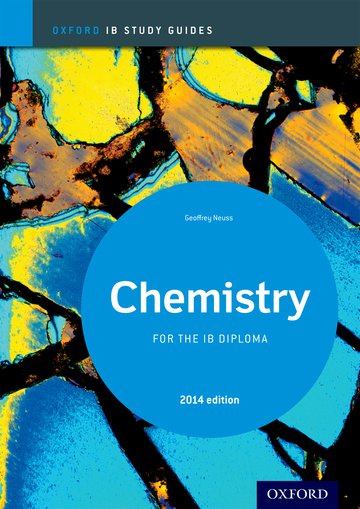The nuclear atom

 2.1 The nuclear atom (3 hours)
2.1 The nuclear atom (3 hours)
Pause for thought
Atomic theory is just that - a theory - but it is a very good one! Humans will never be able to see atoms as an atom is smaller than the wavelength of visible light. However scanning tunnelling microscopy does provide direct evidence to support the existence of atoms. This uses a very fine probe with a tungsten tip to scan a solid surface. It records the minute changes in current due to uneven surfaces when a potential difference is applied. This generates a contour map of the surface and the outlines of individual atoms can be detected.

A scanning tunnelling microscope image of the IB made with xenon atoms on a nickel surface
(with apologies to IBM for losing their M).
Nature of Science
This includes the importance of improvements in instrumentation to develop understanding of the structure of the atom such as the routes taken by alpha particles when fired at a thin sheet of gold which led to the Rutherford model of the atom replacing the 'plum pudding' model.
The work of Thomson and others showed that atoms can be broken down into smaller sub-atomic particles thus overthrowing the long held paradigm of atoms being indivisible.
Learning outcomesAfter studying this topic students should be able to: Understand:
Apply their knowledge to:
| Clarification notesRelative masses and charges of the subatomic particles should be known (the actual values are given in section 4 of the data booklet). The mass of an electron can be considered to be negligible. Specific examples of isotopes do not need to be learned and the operation of the mass spectrometer is not required. International-mindednessThe enrichment of uranium by isotopic separation using the physical properties of the different isotopes of uranium operate in many different countries as part of nuclear energy and weaponry programmes. |
Teaching tipsThis may well be the first lesson you have with a new class as I like to start the programme with this topic. Rather than just telling them about atoms and sub-atomic particles it can be useful to put them into groups of say four and ask them to teach each other what they already know about the topic and then get the groups to report back. You might be surprised at how much they have picked up from previous exposure. Often I find that they know that protons and neutrons have a mass of one but they are less sure about the unit (amu). If some of them have done a reasonable level of chemistry before you may be able to get them to use their existing knowledge to work out the actual mass of a proton based on the model of a hydrogen atom. It is simply one divided by Avogadro's number (and now the answer is in grams). Stress how small the nucleus is and that atoms are essentially empty space - which seems to run contrary to common sense. Ensure they have a clear understanding of what is meant by mass number, atomic number, charge on an ion and isotope and give them plenty of practice at working out the number of protons, neutrons and electrons in atoms and ions from the mass number, atomic number and charge etc. There is not a lot of hands-on practical work that can be done on this sub-topic but there are simulations such as Milliken's oil drop and the Geiger and Marsden experiment that can be done. You could also take your students to see a working mass spectrometer in a nearby research or industrial laboratory. | Study guide:
Pages 9 & 10 QuestionsFor ten 'quiz' multiple choice questions with the answers explained see MC test: The nuclear atom. For short-answer questions which can be set as an assignment for a test, homework or given for self study together with model answers see The nuclear atom questions. Vocabulary listnucleon IM, TOK, Utilization etc.See separate page which covers all of Topics 2 and 12. Practical work
Good background information click on the link at the bottom for the actual simulation. |
Teaching slides
Teachers may wish to share these slides with students for learning or for reviewing key concepts.
Other resources
1. You can download a useful simulation from PhET, University of Colorado at Boulder to show different Models of the hydrogen atom ![]() .
.
3. A useful video on how carbon dating works by Best of Science that explains it, puts it into context and also includes reference to other ways of dating artefacts.
4. One useful example to show how the physical properties of isotopes differ is the separation and enrichment of 235U from naturally occurring uranium (which is mainly 238U). This relies of the mass difference and the fact that UF6 is a gas so one of the methods of separation used is gaseous diffusion. Good information on uranium hexafluoride including how it can be separated into the different isotopes can be found in 'Molecule of the month' by Simon Cotton at the School of Chemistry, Bristol University.
5. A second example showing how the properties of isotopes differ using the fact that ice made from 'heavy water', D2O, sinks rather than floats as it is more dense than water.
6. Refer to my blog on isotopes in teeth to see how archaeologists can now determine human migratory patterns using isotopes of strontium.
7. Some further information on how scanning tunnelling microscopy works.

 IB Docs (2) Team
IB Docs (2) Team 




















